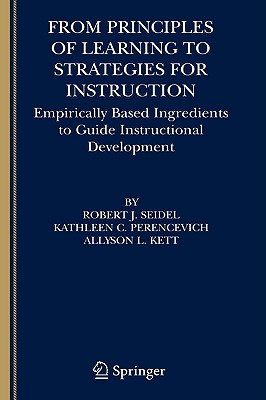From Principles of Learning to Strategies for Instruction: Empirically Based Ingredients to Guide Instructional Development (2005)
$125.99
Description
The primary goal of instructional design is improving the quality of learning and instruction. Instructional designers have focused on a number of areas of critical concern and developed a variety of techniques to achieve this goal (Reigeluth, 1983, 1999). Critical areas of concern for those who plan, implement and manage instruction include (a) needs assessment (identifying gaps or deficiencies in knowledge and performance to be addressed in instruction); (b) task analysis (identifying the types of knowledge, skills and attitudes to be developed during instruction); (c) learner analysis (determining who the learners are, what they know, relevant differences, etc. ); (d) instructional strategies (developing strategies appropriate for the task and learners involved); and (e) assessment and evaluation (determining how to assess individual progress and evaluate programs). There are many books already in print that treat the general domain of instructional design, as well as texts that target each of these areas of concerns. Why then another book on these issues? There are several answers to this question. Many of the available books treat instruction as a formal process that proceeds according to specific and detailed instructional systems development models (see, for example, Dick, Carey & Carey, 2005). Indeed, the US military has created a series of handbooks specifying details of the various instructional development processes (see Department of Defense, 1999).
Author: Seidel, Robert J, Author: Perencevich, Kathleen C, Author: Kett, Allyson L
Topic: Education / Teaching
Media: Book
ISBN: 387234764
Language: English
Pages: 230
Additional information
| Weight | 1.25 lbs |
|---|---|
| Dimensions | 9.57 × 6.28 × 0.83 in |















Reviews
There are no reviews yet.